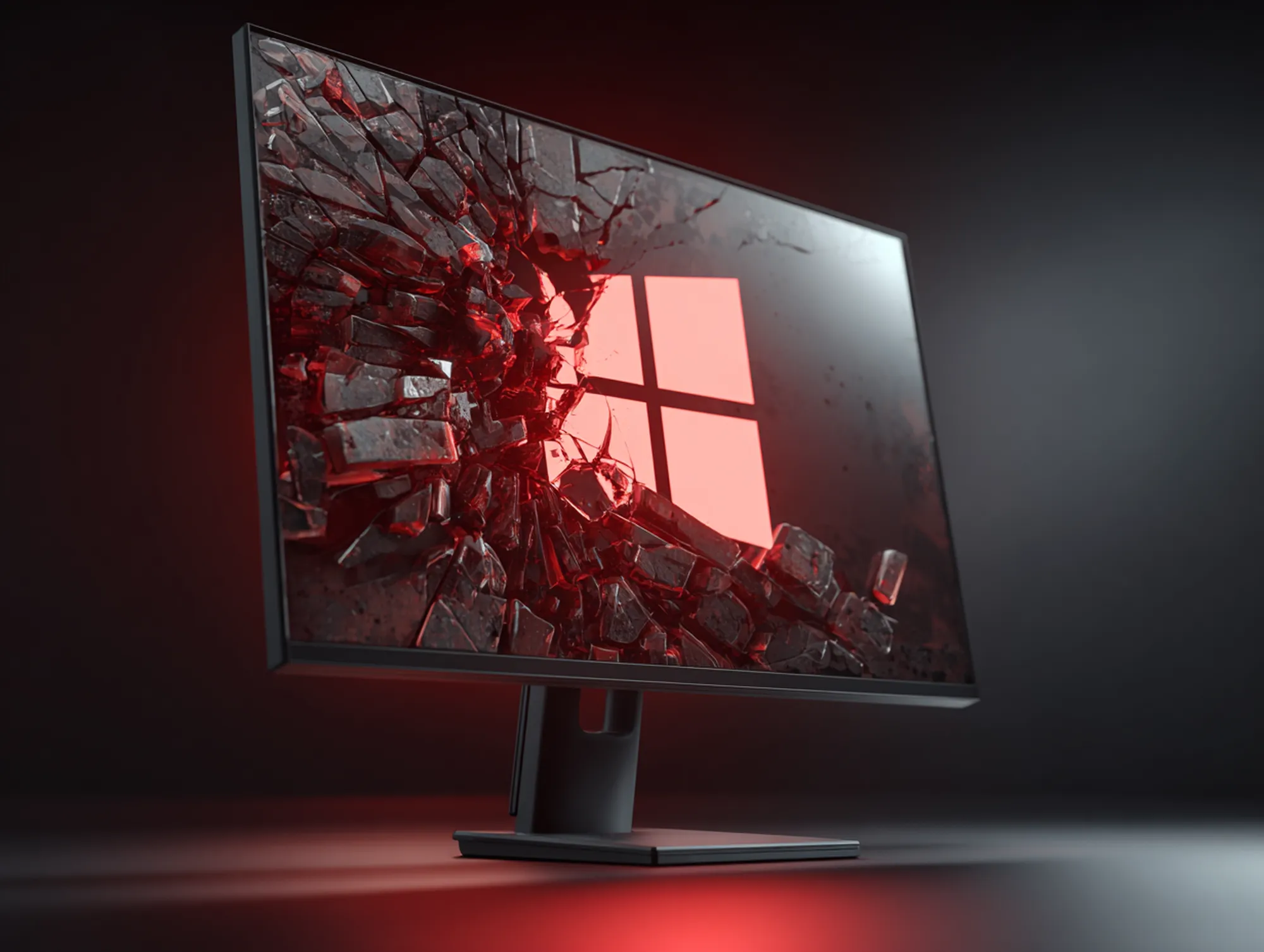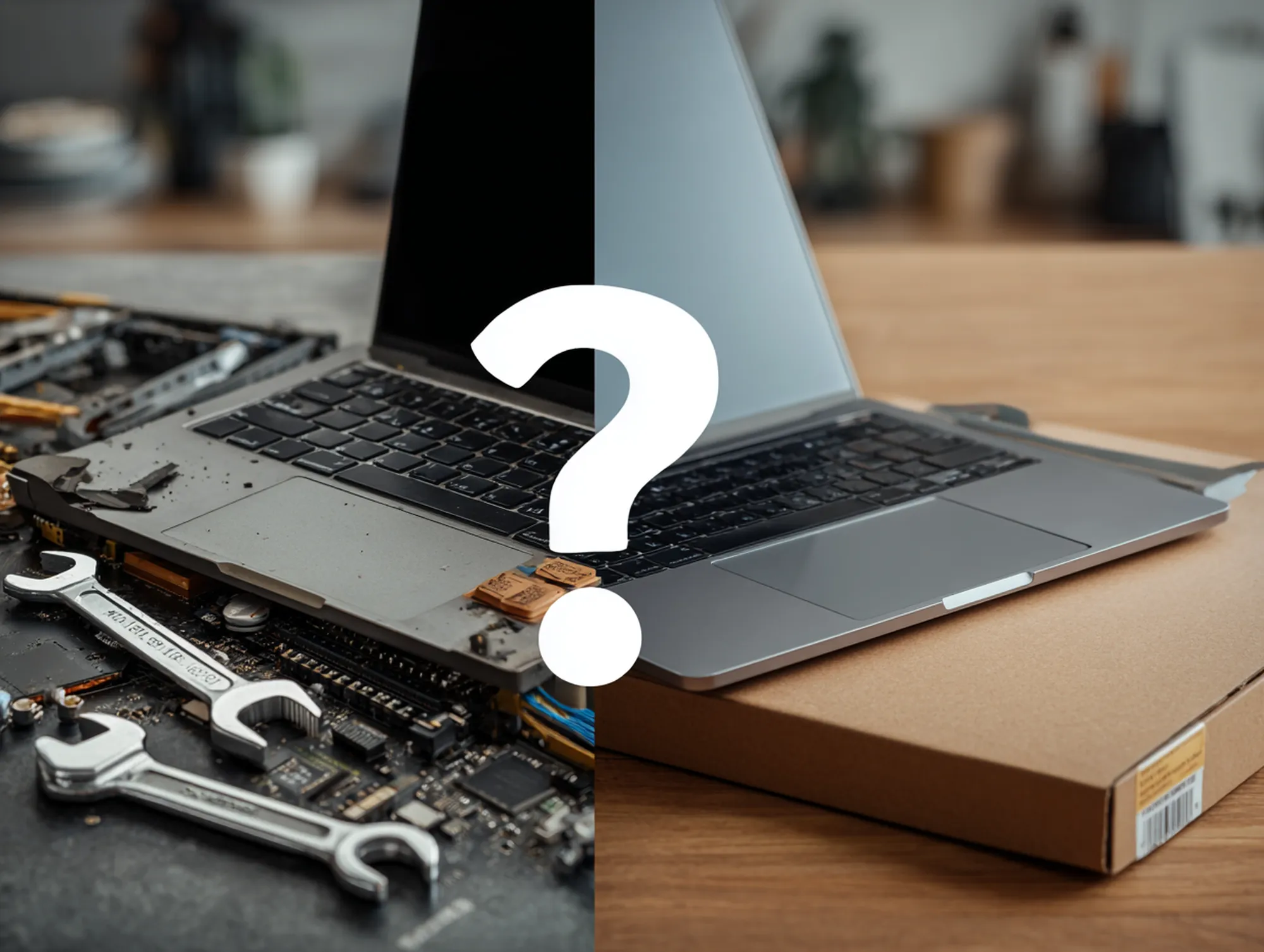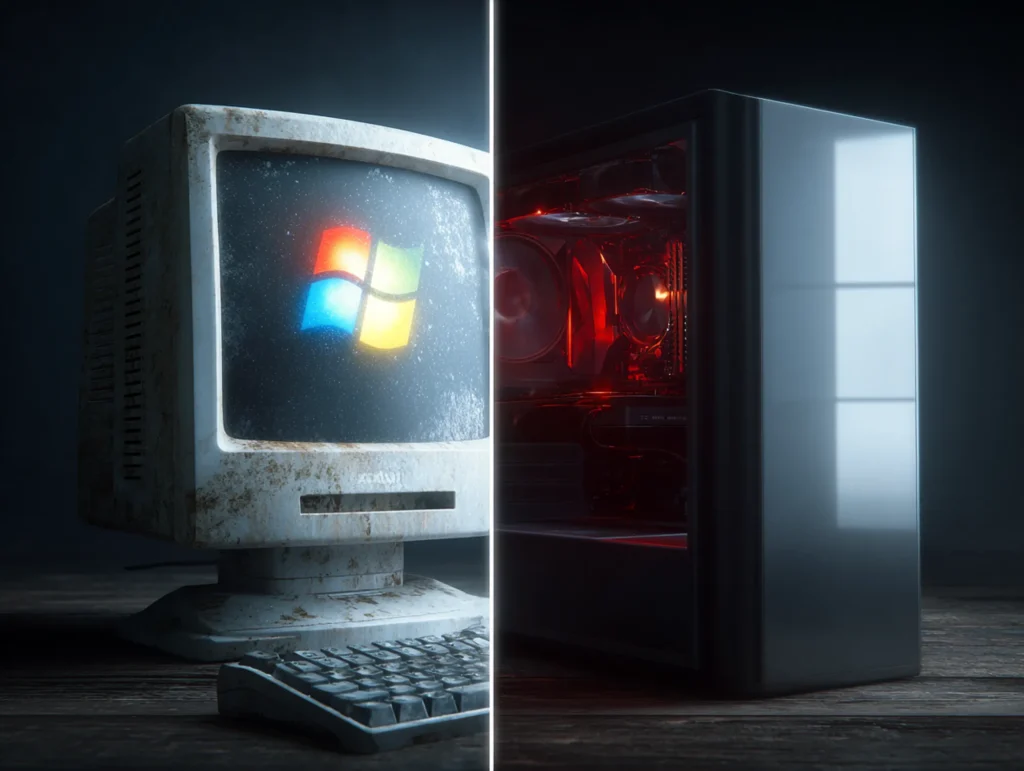The clock is ticking on Windows 10. Microsoft has announced it will stop supporting Windows 10 on October 14, 2025 – after that, no more free security patches or fixes will be provided[1]. If you’re still using a PC with an end-of-life Windows version (whether Windows 7, 8.1, or soon Windows 10), it’s time to start planning for an upgrade. Running an operating system past its support date won’t make your computer suddenly stop working, but it will leave you increasingly vulnerable and outdated over time[2]. Think of it like leaving your front door unlocked – hackers can exploit known flaws at will[3] once Windows is no longer patched.
So, how do you prepare for this transition without breaking the bank? In this guide, we’ll explain what Windows “end-of-life” means for you, how to decide whether to upgrade your existing PC or buy a new one, and smart tips to budget for a hardware refresh. Whether you’re a home user or a small business owner in Chillicothe, Missouri, these practical steps will help you stay secure and up-to-date without overspending.

What Does Windows End-of-Life Mean and Why Should You Care?
Software “end-of-life” (EOL) is when the developer (Microsoft in this case) stops providing support and updates for that product. For Windows 10, reaching EOL on October 14, 2025 means no more security updates, bug fixes, or technical support after that date[1]. In plain language: any new security holes discovered in Windows 10 after that point will not be fixed by Microsoft. Your PC won’t get critical patches, leaving it open to malware and cyberattacks that take advantage of known weaknesses.
This is a big deal for both businesses and everyday users. Cybercriminals are expected to target Windows 10 PCs heavily once support ends, because so many people still use Windows 10[4]. In early 2025, over 60% of Windows computers were still running Windows 10 (versus around 30% on Windows 11)[4]. That huge user base becomes a prime target. Security experts warn it’s “five minutes to midnight” – meaning don’t wait until the last minute to act, or you’re risking a security fiasco once the updates stop[5].
Beyond security, an out-of-support Windows can lead to other headaches: – Software and Device Incompatibility: New applications and hardware devices will increasingly be built for Windows 11 (and later). Over time, you might find that new printers or software simply won’t work on Windows 10, or that new peripherals lack Windows 10 drivers[6]. (For instance, some Microsoft 365 apps will gradually drop support for Windows 10 after 2025, making them less secure or even unusable if you don’t upgrade.) – Performance Issues: As technology advances, older systems miss out on optimizations present in newer OS versions. Windows 11 is tuned for modern hardware and workflows, so sticking with an old OS could mean slower performance and more frequent glitches[7]. Clinging to a many-years-old operating system might put you at a competitive disadvantage in terms of efficiency and speed. – No Help if Things Go Wrong: Without official support, you can’t get help from Microsoft for any Windows 10 problems, and third-party software vendors will eventually stop testing or supporting their products on it. If something breaks, you’re on your own – which is not a great position to be in if you rely on your PC for work or important tasks.
In short, Windows end-of-life is a hard deadline. Ignoring it isn’t a viable option if you care about security, compatibility, or productivity. The good news is you have options to make this transition smoothly – and it doesn’t have to drain your wallet.

Is Your Windows Version Outdated?
First, figure out where you stand. It’s easy to check your current Windows version: – On Windows 10 or 8.1, go to Settings > System > About to see your Windows edition and version. – On Windows 7, right-click “Computer” and choose Properties to see the Windows version.
Here are the key Microsoft support deadlines: – Windows 7: Support officially ended back on January 14, 2020. If you somehow still have a Windows 7 PC, it’s long past time to upgrade or replace it. – Windows 8.1: End-of-life was January 10, 2023. Windows 8.1 PCs also no longer get updates. – Windows 10: End-of-life is October 14, 2025[1]. As of now (2025), you still have time, but you should be mapping out your upgrade plan now – especially if you have several computers to deal with. – Windows 11: This is the current operating system and will be supported for years to come. If you’re already on Windows 11 and your hardware is relatively new, you’re in good shape. Just keep up with Microsoft’s periodic updates.
If your PC is running Windows 10, you should check if it meets the requirements for Windows 11. Microsoft’s PC Health Check app (available on Microsoft’s website) can tell you if your machine is Windows 11 compatible. The main hurdles are usually the processor generation and certain security features like TPM 2.0 (a security chip) and Secure Boot. Windows 11 has stricter system requirements than Windows 10; for example, it generally requires an 8th-gen or newer Intel processor (around 2017 or later) and TPM 2.0 support[8]. If your computer was purchased within the last 4–5 years, there’s a good chance it can run Windows 11. If it’s older, or a very budget model, it might not meet the criteria – which means you’ll need to consider new hardware.
Tip: Even if Windows 11 can technically install on your older PC (through unofficial hacks), it’s not wise. You could face instability or missing drivers by forcing Windows 11 on unsupported hardware[9]. It’s better to either stick with Windows 10 until you replace that machine, or explore other options like a lightweight OS, rather than breaking your system trying to run something it wasn’t meant to.

Upgrade or Replace? Deciding the Best Path
Once you know your situation, the next question is: Do I upgrade my existing PC to Windows 11, or replace it with a new PC? The answer depends on your device’s age and capabilities: – Upgrade (Software-Only): If your current PC is compatible with Windows 11 and is reasonably up-to-date (think a machine bought in the last few years), you can likely upgrade to Windows 11 for free[10]. Microsoft is allowing Windows 10 users to move to Windows 11 without buying a new license, which is a big budget saver. In this case, your costs are more about time and maybe a bit of tech help, not purchasing new hardware. You might still consider small hardware upgrades (like adding more RAM or an SSD) to get the best performance, but the core PC can stay the same. – Replace (New Hardware): If your PC doesn’t meet Windows 11 requirements or is over, say, 5–7 years old, it’s probably time for a new computer. Older machines not only lack compatibility; they’re also likely slower, out of warranty, and more prone to failure. Buying a new Windows 11 PC ensures you’re set for the next 5+ years of support and comes with the latest security features built-in. Yes, it’s a bigger upfront cost, but consider the trade-off: an old machine might need multiple component upgrades just to barely run Windows 11. By the time you’ve replaced the hard drive, added a TPM module (if that’s even possible), upgraded the RAM, and maybe even the CPU, you might have spent almost as much as a new PC – and still have an old computer. As one guide put it, if a machine needs a new motherboard or processor to meet Windows 11 requirements, “you might as well buy a modern one”[11].
Sometimes the choice is clear. For example, a 10-year-old Windows 7 desktop should be replaced, not upgraded. A 2-year-old high-end Windows 10 laptop that meets requirements can be upgraded to Windows 11 and will feel just as fast. For those in-between cases (PCs around 4–6 years old), weigh the cost and hassle of upgrades vs. the benefits of new hardware: – Can a simple upgrade extend its life? If all you need is a $50 stick of RAM or a $100 SSD to make Windows 11 run well, that’s worth considering – especially if your budget is tight[12]. – Multiple upgrades needed? If you’re looking at deep surgery (no TPM, very old CPU, maxed-out RAM capacity), then it’s likely more cost-effective to invest in new equipment. – Energy efficiency: Newer PCs are often more energy-efficient. If you’re running a power-hungry old tower, a new one could save on electricity (a small ongoing cost saving to factor in).

Smart Budgeting Tips for a Hardware Refresh
Upgrading your technology doesn’t have to break the bank. It just requires some planning and savvy moves. Here are some tips to help budget for your Windows hardware refresh:
- Leverage the Free Windows 11 Upgrade (If You Can): As mentioned, if your PC is compatible, moving from Windows 10 to Windows 11 won’t cost you a dime in software fees[10]. Unlike the old days where a new OS meant buying licenses, Microsoft is basically giving Windows 11 to Windows 10 users at no charge. That means your budget can focus on hardware improvements (and maybe IT support), not on purchasing a new operating system.
- Assess Upgrade Costs vs. New PC Costs: For each PC you have, compare the price of upgrading components to the price of a replacement. Let’s say you have a decent desktop that just needs a RAM boost and switching from an old hard drive to a fast SSD – that might cost a couple hundred dollars total, far cheaper than a brand-new $1,000 computer. On the other hand, if you have an aging laptop that would need a new motherboard (for TPM 2.0), plus more RAM, plus a better CPU… that’s essentially a whole new machine’s worth of parts. In that scenario, put your money toward a modern PC. Prioritize the easy, affordable upgrades first – things like adding memory, replacing a slow hard drive with an SSD, or updating an old Wi-Fi card. These can extend the life of a mid-age PC at relatively low cost.
- Plan a Phased Replacement (Stagger Your Purchases): You don’t have to replace every outdated PC all at once. If you have multiple machines (in a family or a small office), consider upgrading in phases to spread out the expenses[13]. For instance, you might refresh the most critical or most-used PCs this quarter, and then others later in the year. Spacing it out can help with cash flow, and it also means if something unexpected comes up (say a great sale or a new model release), you can adjust your plan. Just don’t procrastinate too long – waiting until the last minute (fall 2025) could leave you scrambling and possibly paying a premium for rushed upgrades or limited stock. Aim to have the bulk of your new hardware in place well before that October 2025 deadline[14].
- Don’t Forget Hidden Costs (Installation & Downtime): When making your budget, include a buffer for the “extra” tasks that come with new tech. For home users, this might mean paying a tech-savvy friend or professional for an hour to help transfer files from the old PC to the new one, or to set up your printer and programs on the new system. For a business, factor in a bit of employee downtime or brief training if the new system looks unfamiliar (Windows 11 has a slightly different Start menu, for example). If tech isn’t your strong suit, you might also budget for some professional help to set up new devices or migrate data – there’s a cost, but it can ensure a smooth transition and prevent costly mistakes.
- Maximize Value from Old Devices: Before you rush to toss out older computers, see if there’s a way to repurpose them or get value back. For example, you could hand down a newer office PC to replace an ancient one in a less-demanding role. This cascading upgrade approach squeezes more life out of hardware by moving it to where high performance isn’t as critical. Also, look into trade-in programs or selling your old devices. Some manufacturers and retailers offer trade-in credits for aging machines, which can offset the cost of new ones[15]. Even if the dollar amount isn’t huge, it beats having old PCs collect dust.
- Shop Smart for Deals: Timing and sourcing can make a big difference in cost. Keep an eye out for seasonal sales (like back-to-school, Black Friday, etc.) on laptops and desktops. Manufacturers often discount older models when new ones come out – and those “last year’s model” PCs are usually perfectly fine for most needs and come much cheaper. If you’re buying several machines at once, see if you can get a bulk or business discount. Don’t shy away from refurbished PCs either, as long as they come from a reputable source with a warranty. You might score a like-new business-grade computer for a fraction of the price. (Business-class PCs often come with 3-year warranties by default[16], which is a nice bonus for reliability.)
- Budget for Software Updates (If Needed): Most programs that ran on Windows 10 will run on Windows 11 just fine. But double-check if you have any critical, older software – say an old accounting program or a specialized app – that might need an update to work on Windows 11. In rare cases, you might need to purchase a new version or find an alternative. It’s better to discover that early and include it in your planning (for example, upgrading an old application to a Windows 11 compatible version)[17], rather than be caught off guard later. In many cases, though, your software will transition smoothly.
By taking these steps, you can build a realistic budget for upgrading your tech. A well-planned approach will consider not just the price of new PCs, but also the “all-in” cost of the transition: hardware, time, support, and any productivity hiccups. The good news is that moving to modern hardware and Windows 11 can often be more of an incremental upgrade than a giant one-time expense, especially if you spread it out over your normal refresh cycle[18]. And remember, the cost of doing nothing – running an obsolete, vulnerable system – can end up far greater if it leads to a security breach or major downtime.

Don’t Wait Until It’s Too Late: Start Planning Now
The key takeaway is to be proactive. If you know Windows 10 (or another version you use) is approaching end-of-life, start the budgeting and upgrade process now. This gives you time to shop for good deals, back up your data, schedule help if needed, and make the transition on your terms – not in a rushed panic after something stops working or, worst-case, after a malware incident.
For households and businesses alike, technology upgrades are now just a part of life. The silver lining is that with Microsoft offering free OS upgrades and with proper planning, you can stay current without unpleasant financial surprises[18]. If budgeting or tech planning isn’t your forte, don’t hesitate to reach out for help. Pinpoint Tech – known as “the friendly IT guys” here in the Chillicothe area – is ready to assist North Missouri residents and small businesses with affordable upgrade strategies. We can help you assess your current PCs, recommend which ones to upgrade vs. replace, and even handle the setup of new equipment so you can focus on what you do best.
Bottom line: Windows end-of-life deadlines don’t have to be scary. They’re a nudge to boost your security and productivity with newer tech. Take stock of your computers and make a plan, so you’re prepared well before the deadline arrives.

FAQs
When does Windows 10 support end?
Windows 10 will reach its end-of-life on October 14, 2025, after which Microsoft will no longer provide free security updates, patches, or technical support for it[1]. This is the official cutoff date to keep in mind for upgrading.
Can I still use Windows 10 after the end-of-life date?
Technically yes – your Windows 10 PC will continue to run after October 2025. However, using it will become increasingly risky. You won’t get security fixes for new threats, so over time your system could become an easy target for malware[3][4]. Additionally, new software and devices may stop supporting Windows 10, meaning you could run into compatibility issues. It’s best not to rely on Windows 10 for too long after end-of-life, especially for anything connected to the internet or important data.
Is the upgrade to Windows 11 really free?
Yes. If you have a valid Windows 10 license, Microsoft allows you to upgrade to Windows 11 at no cost[10]. Just make sure your PC meets the Windows 11 hardware requirements. You can check this by running Microsoft’s PC Health Check app or looking in Windows Update for an upgrade notification. Keep in mind, the free upgrade covers the operating system license – you might still want to invest in hardware upgrades (like more RAM or a faster drive) to get the best performance.
What if my computer can’t run Windows 11?
If your PC is too old or doesn’t meet Windows 11’s requirements, you have a few options. One is to continue using Windows 10 a bit longer and purchase Extended Security Updates (ESU) from Microsoft, which as of now costs around $30–$60 for an additional year of critical patches[19][20]. This can buy you some time, but it’s meant as a temporary measure – these updates get more expensive each year and will stop entirely by 2028. Another option is to install an alternative lightweight operating system (like a user-friendly Linux distribution or ChromeOS Flex) that can run on older hardware – but that’s a bigger change and may not be for everyone. For most folks, the practical solution will be to replace the machine. If budget is an issue, consider the tips above: look for a refurbished PC or a gently-used one, or spread out your upgrades in phases.
How often should I replace or upgrade my computer?
In general, a typical computer lifespan is around 4 to 6 years before it starts to feel outdated, though it can vary. Many businesses use a 3–5 year refresh cycle for PCs[21]. For home users, you might stretch it a bit longer if your needs are basic and the hardware is holding up well. The key indicators that it’s time to upgrade are: your operating system is no longer supported, your PC can’t run modern software or updates, it’s become very slow even after maintenance, or hardware components (like the battery or hard drive) are failing. If you’re hitting any of those, start planning for a new PC or significant upgrades. Remember, a computer that’s too old to secure or keep running smoothly isn’t really saving you money – it might cost you more in security risks and frustration in the long run.
Sources
- Microsoft Support – Official notice that Windows 10 support ends on October 14, 2025, after which no more security updates or fixes will be provided[1].
- Uprise Partners Blog – Emphasizes the security risks of running Windows 10 past EOL (likening it to leaving your door unlocked) and provides budgeting tips like using the free OS upgrade, upgrading components vs. buying new, and doing phased PC replacements[2][12][13].
- PCWorld – Notes that as of early 2025 Windows 10 still held over 60% market share vs ~30% for Windows 11, and warns that cybercriminals will heavily target outdated Windows 10 systems after support ends (millions of PCs could be at risk)[4][5]. Also mentions Microsoft’s paid ESU program (about $60 for the first year) to extend Windows 10 security updates through 2026 as a temporary measure[20].
- PC Corp (IT Blog) – Highlights that Windows 11 has stricter hardware requirements (like TPM 2.0 and newer CPUs), meaning many older PCs cannot upgrade in-place[8]. Recommends checking compatibility and notes the typical hardware refresh cycle is 3–5 years, suggesting it’s a timely opportunity to replace aging devices[21].
- Windows Forum – Suggests home users with non-upgradeable PCs consider the Windows 10 Extended Security Updates as a stopgap while budgeting for hardware refresh or exploring other OS options[19][22] (reinforcing that staying on unsupported Windows without a plan is risky).
[1] Windows 10 support ends on October 14, 2025 – Microsoft Support
[2] [3] [6] [7] [10] [11] [12] [13] [14] [15] [16] [17] [18] Windows 10 End of Life: A Small Business Guide to Upgrading to Windows 11
[4] [5] [20] Windows 10 dies in 2025: Here’s the impact it will have on your PC | PCWorld
[8] [9] [21] Plan for Windows 10 EOL with a Device Refresh Strategy – PC Corp
[19] [22] Windows 10 End of Support 2025: Plan Your Migration by Oct 14 | Windows Forum
